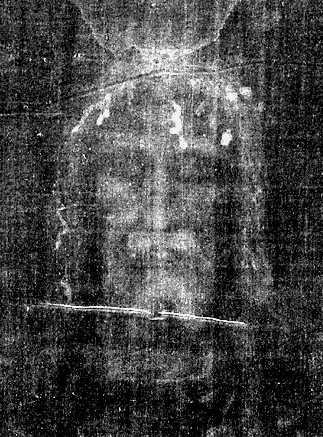|
Your experienced feedback ... thanks!
|
As to what I think.
First of all, the entire story of a woman named Veronica and her veil are somewhat suspect... the woman's very name means Vera - "True" - Icon - "Image" in a combination of Latin and Greek. While a woman may have offered her veil for Jesus to wipe his face on while carrying his cross on the Via del a Rosa, the likelyhood of her name being "Veronica" is doubtful.
Secondly, the material that the Manoppello image is on is not one that would likely be used for a sweat cloth... it would not absorb anything... or even your average veil. It is an extremely rare and costly cloth, far more costly than silk. It is still the rarest cloth on Earth. The cloth is Byssus, made from the cillia of the pinna nobilis Sea Urchin. As far as we know, there is only one living weaver of Byssal cloth still around. The cloth produced from these filaments can be woven even finer than silk and is extremely light and warm, but attracts moths which eat it. It was said that a pair of women's gloves could fit into half a walnut shell and a pair of stockings in a snuffbox. 2000 years ago it was something that was pretty much reserved for royalty.
Thirdly, most Shroud scholars are of the opinion that the various traditions of the "Veronica" and the "Mandylion" as seperate cloths arise out of the possibility that the shroud, to hide the brutal nature of the assault on Jesus' body, had been kept in a frame folded twice in four or, as it was referred to in many early references, "tetradiplong". When folded, doubled four times end over end, it is possible to have a section of the Shroud that shows only the face exposed.
Fourthly, the image on the cloth at Matoppello is hardly an exact match for the image on the Shroud... there are some distinct differences... for example, where is the mustache?


The differing widths of faces is not as important because the shroud's image is artificially narrowed by artifacting of the bleaching method which resulted in darker Linen bands on each side of the head and the face on the Shroud may be actually wider and rounder than previously thought.
Fifth, the depiction of teeth and eyes in the "veil" is problematic... There is no way they could have been created by contact... and bear an artistic appearence. These may have been added or enhanced by pious, well meaning "restorers" of a later period... or be originals from the artist who may have created the veil. The whites of the eyes are actually whiter than the imageless parts of the transparent cloth...
Lastly, the Manoppello Veil has not been subjected to any kind of scientific examiniation beyond light and ultraviolet photography. Neither of which is sufficient to determine the presence or absence of pigments. I believe the whiteness of the eyes and teeth indicate that pigments are indeed present. I would want to see much more done before making a positive judgement such as this article makes.